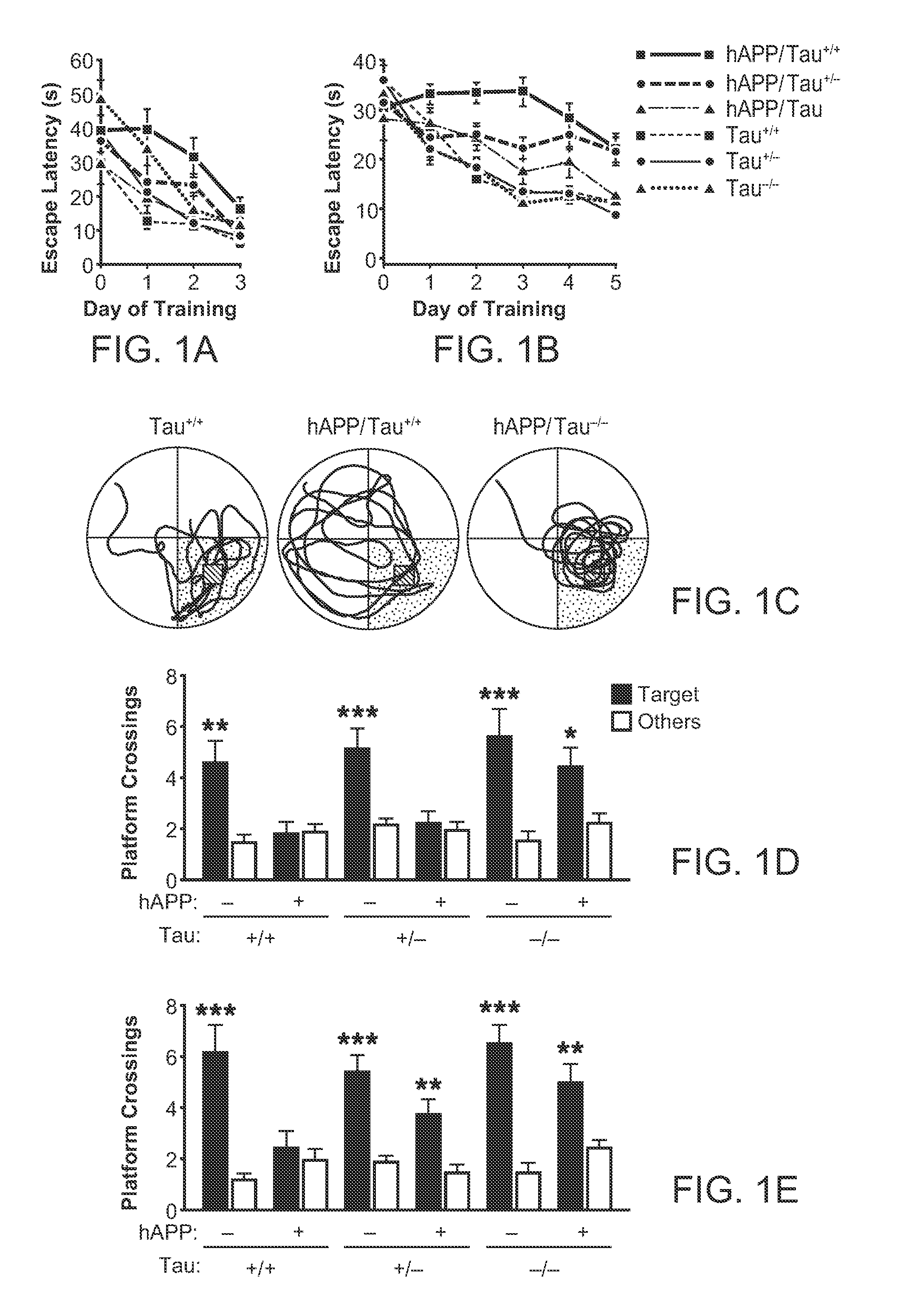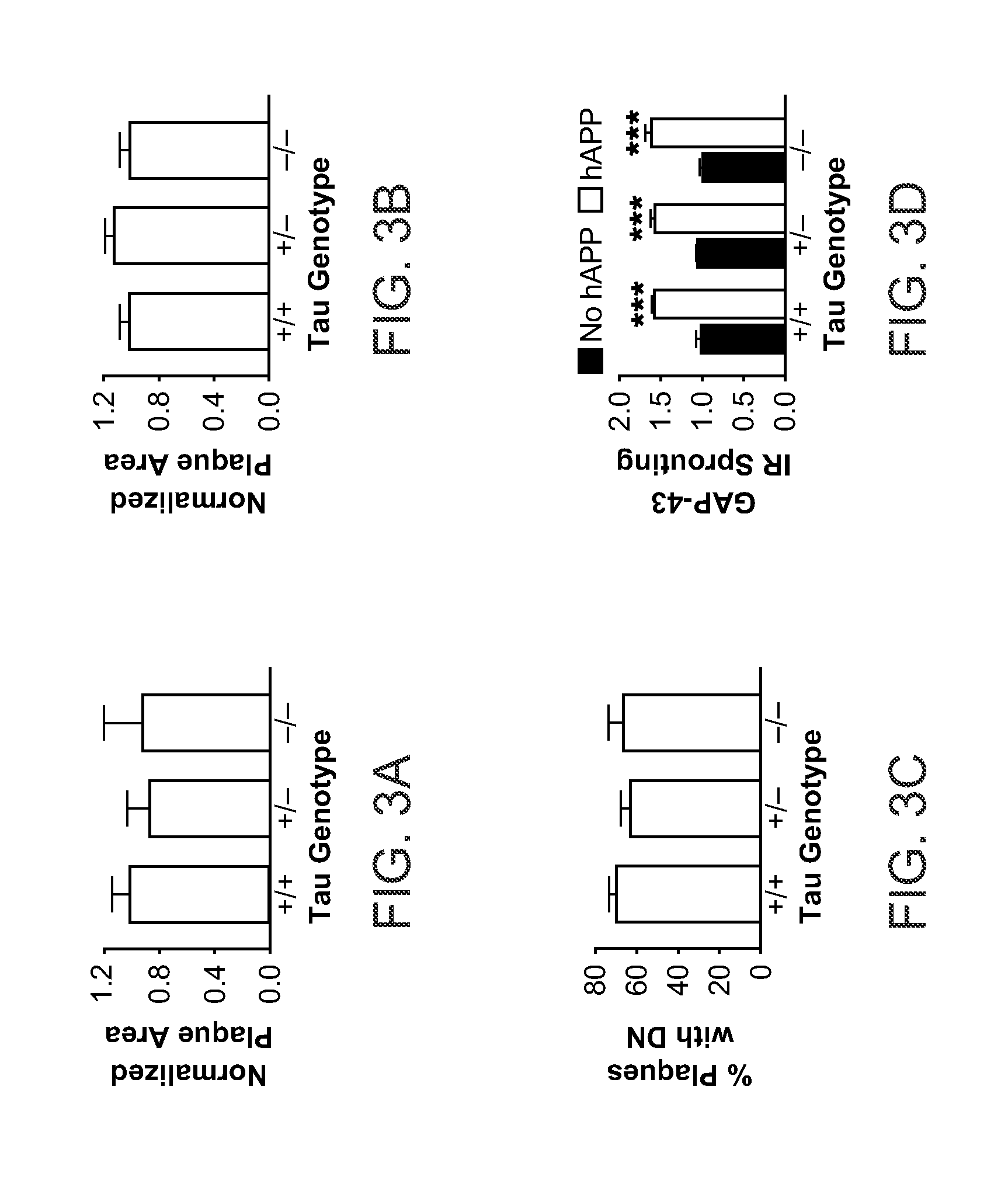Agents that Reduce Neuronal Overexcitation
a neuronal overexcitation and agent technology, applied in the field of agents that reduce neuronal overexcitation, can solve the problems of adverse side effects, limited efficacy of current drugs used to reduce excitotoxicity, and association with use of such drugs
- Summary
- Abstract
- Description
- Claims
- Application Information
AI Technical Summary
Benefits of technology
Problems solved by technology
Method used
Image
Examples
example 1
Effect of Tau Reduction on Excitotoxic Seizure
Materials and Methods
[0216]Mice. The J20 line (1), which expresses an hAPP minigene with the Swedish (K670M / N671L) and Indiana (V717F) familial Alzheimer's disease (AD) mutations under control of the PDGF promoter, was crossed with Tau− / − mice (2). Studies were conducted on sibling offspring from hAPP / Tau+ / −× Tau+ / − matings. Both males and females were used, except for the water maze, where only males were tested. A total of 454 mice (66-83 per genotype), analyzed in seven separate cohorts, were tested in behavioral and / or neuropathological experiments.
[0217]Mice expressing lower levels of hAPP (hAPPlow, line J9) and mice expressing a transgene for the murine Src-family tyrosine kinase FYN (line N8) were crossed to tau knockout mice. hAPPlow / Tau− / − mice and FYN / Tau− / − mice were crossed to produce bigenic (and nontransgenic control) mice on a tau-deficient background, and these mice were compared with bigenic (and nontransgenic control) m...
PUM
| Property | Measurement | Unit |
|---|---|---|
| molecular weight | aaaaa | aaaaa |
| molecular weight | aaaaa | aaaaa |
| molecular weight | aaaaa | aaaaa |
Abstract
Description
Claims
Application Information
 Login to View More
Login to View More - R&D
- Intellectual Property
- Life Sciences
- Materials
- Tech Scout
- Unparalleled Data Quality
- Higher Quality Content
- 60% Fewer Hallucinations
Browse by: Latest US Patents, China's latest patents, Technical Efficacy Thesaurus, Application Domain, Technology Topic, Popular Technical Reports.
© 2025 PatSnap. All rights reserved.Legal|Privacy policy|Modern Slavery Act Transparency Statement|Sitemap|About US| Contact US: help@patsnap.com



